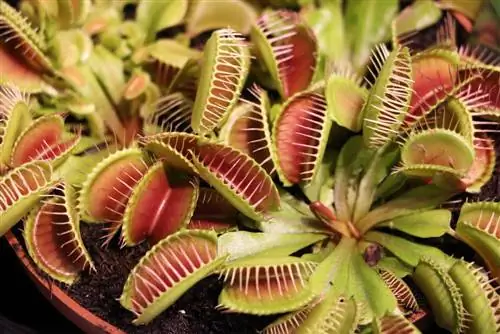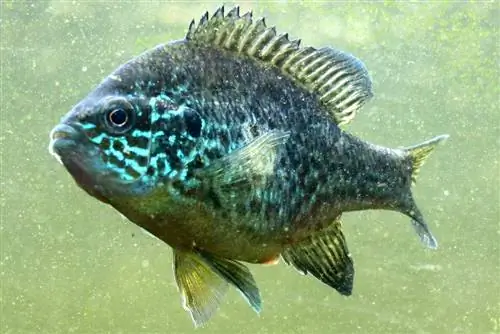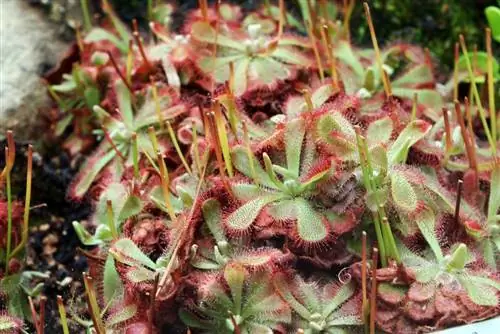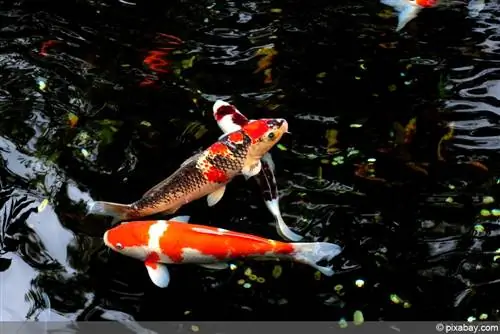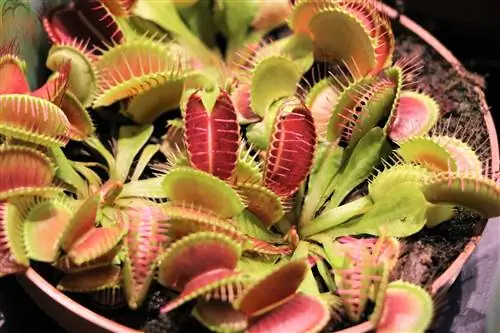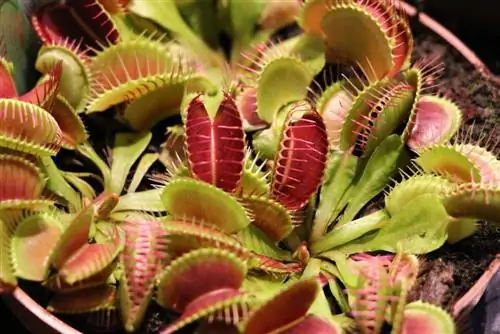- Author admin [email protected].
- Public 2023-12-17 03:39.
- Last modified 2025-01-24 12:45.
Carnivorous plants represent an unusual group of plants in botany, both in terms of their exotic form and their feeding habits. The carnivores have special requirements when it comes to planting substrate, and most varieties also need a lot of light at their location. No compromises should be made when it comes to irrigation water, otherwise the plants will quickly wither away and not form beautiful traps.
Location
Carnivorous plants do not tolerate locations that are too dark, so the plant should be placed in a place directly by the window. The windowsill does not always have to face south; many varieties also work well with a window facing east or west. North-facing windows are usually far too dark, as are locations inside the room that have too little light. An exception is butterwort, which can also thrive on a north-facing window. In addition, a place directly above a radiator is also not suitable as the air there dries out far too quickly. In this case, parts of the plant dry out, which is harmful to the sensitive plants. During the warm summer months, the carnivores can move outdoors, but they also need high humidity there.
- Need an extremely sunny location
- A south window is optimal
- Heat requirement depends on the species
- Avoid midday sun that is too hot
- Shade from too much sunlight
- Make sure the humidity is constantly high, 70% is sufficient
- Perfect locations are terrariums or aquariums
- Never close containers completely to avoid heat build-up
- Moving outside possible in summer, either garden, terrace or balcony
- Cultivate native varieties in moorland
Tip:
If the location has too little light, additional artificial light can be used. Light bulbs with 120 to 150 watts per square meter are ideal so that the carnivorous plant is sufficiently bright.
Cultivating in the bog bed

There is a lot of freedom in the design of the bog bed, but no foreign nutrients should get into this habitat. For this reason, there should be no trees or bushes nearby. Furthermore, predators are a problem when kept outdoors, which is why the moor bed needs additional protection. Otherwise, a fatal attack from snails and birds can occur.
- Line a suitable place with waterproof pond liner
- Fill with plant substrate and keep constantly moist
- Make sure the location is sunny
- Install water storage tank
- Ideal for sundews, butterworts and pitcher plants
- Stretch close-meshed wire mesh as protection
Planting substrate
The carnivores need a very specific plant substrate, which is mixed from different components. These mixtures are available from specialist retailers, but they are not particularly inexpensive. If you have already gained some experience with cultivating carnivorous plants, you can mix the substrate yourself. It should be noted that the respective proportions of the ingredients are composed depending on the respective variety. If the conditions are not right, this can have a negative impact on the plants. For this reason, beginners should rely on the help of professionals. Nurseries specializing in carnivores also offer targeted mixtures to improve the growth of plants.
- Need a nutrient-poor plant substrate
- Never use normal garden or potting soil
- Special carnivore soil is ideal
- Consider the basic needs of the varieties
- Alternatively, white peat can be mixed with quartz sand
- Planting substrate must not contain fertilizer
- Finished mixtures contain quartz gravel, coconut fiber, quartz sand, perlite and vermiculite
- There are special blends available from specialist retailers
- Beginners should not take risks with the substrate
Watering & Fertilizing
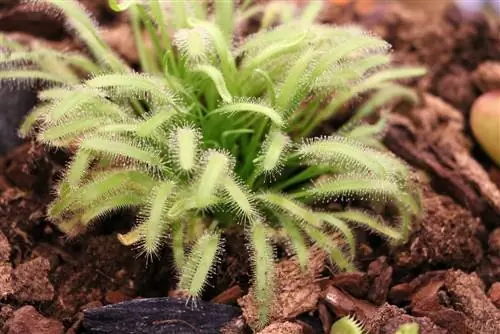
Carnivorous plants react very sensitively to lime in irrigation water, and over time they can even die completely. In many regions the tap water is very hard and therefore not suitable for watering carnivores. If you have an osmosis system for your tap water, you can use the filtered water for carnivorous plants without worry. An alternative is collected rainwater, but in large cities this can be contaminated. The plants should not be watered directly, but rather via an external saucer. Only when this irrigation water has been completely used up should it be watered again. In between, leave the plant to dry for a short time and do not water it immediately. In this way, the plant substrate has the chance to air out; this process only works when it is dry. If growth problems occur, additional fertilizer is required.
- Never use hard water
- Distilled water is ideal
- Alternatively demineralized water possible
- Pour over the coaster
- Water level should be 2-3 cm after the watering session
- Pay attention to high humidity
- Spray regularly with steam
- Never give regular fertilizer
- Fertilization is done by feeding from spring to autumn
- Use only special liquid fertilizer for carnivores
Feeding & Nutrition
Carnivorous plants generally provide themselves with food and do not need additional feeding. If the carnivores fail to catch a small insect, then they are well taken care of. Catching them is still possible even in the cooler winter months, as there are always some insects in living spaces. However, if you want to feed the plants yourself to observe this fascinating process, you should follow a few rules.
- Only use live insects
- Traps only close when the insect is still moving
- Loot should never be too big
- The size of the insects should not be more than a third of the size of the trap
Varieties
When it comes to carnivorous plants, a distinction is made between tropical and native species, which are also equipped with different traps. With sticky traps, the caught insect gets stuck on a sticky secretion, and enzymes then decompose the victim. The sundew, among others, belongs to this group. The folding traps are composed of two leaf halves, which fold together when they come into contact with insects. A very well-known example is the Venus flytrap. The largest genus of carnivorous plants are the waterskins, in which many fascinating species have evolved. The water hoses work with suction traps, which are trapping organs filled with air that suck in their victims using negative pressure. Pitfall traps include pitcher plants, which trap insects. In contrast, fish traps lure insects inside with attractants. Small bristles then prevent the animals from escaping.
Venus flytrap
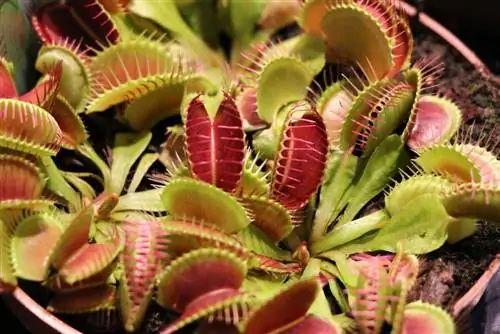
The Venus flytrap thrives both in bog beds and in indoor cultivation, but from autumn onwards the plants usually retreat to the rootstock.
- Needs a lot of sun
- High humidity in summer
- Terrarium or additional glass bowl is ideal
- He althy and strong specimens survive even frosty winters
- Keep houseplants cooler in winter, at 5-10° C
- Lower humidity during the winter months
- Do not feed or fertilize
Sundew
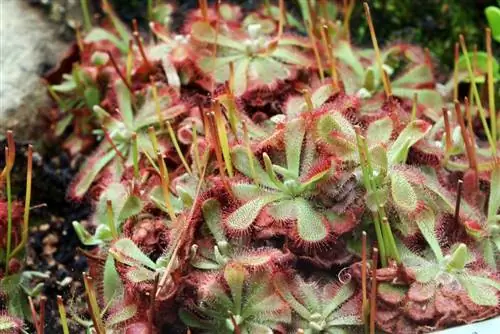
The sundew has the botanical name Drosera capensis and forms distinctive sticky traps. However, if the air is too dry, no adhesive droplets form and the plant cannot catch insects.
- Prefers lots of sunlight
- Always pay attention to high humidity
- Ideal for indoor cultivation as it is not frost hardy
- Moving outdoors possible in summer
- Wintering at room temperatures
Fedwort
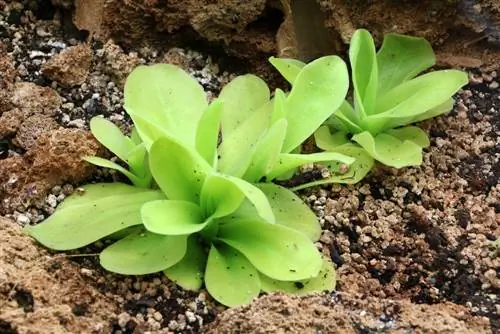
The butterwort is known in botany as Pinguicula vulgaris and thrives best outdoors. In contrast to other carnivores, this variety is not particularly demanding when it comes to humidity.
- Belongs to the sticky traps
- Ideal for the bog bed
- Alternatively in pots in the garden, on the balcony or terrace
- Prefers partially shaded locations
- Can also overwinter outdoors
- Forms flowers in summer
Water hose
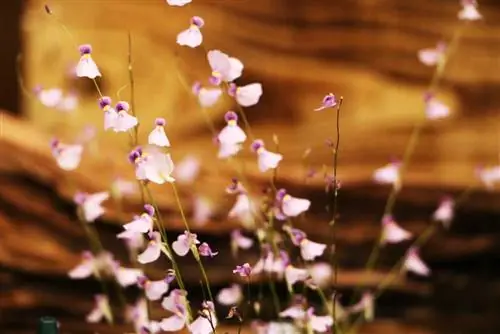
The waterskin has the botanical name Utricularia sandersonii and can be easily cultivated in a pot. However, the planter should always be in water so that the plant does not dry out.
- Bright location
- Avoid direct midday sun
- Requires high humidity, fill the coaster with 2-3 cm of water
- Clean coasters regularly and thoroughly
- Makes pretty flowers
Pitcher Plant

The pitcher plant is called Nepenthes in botany and forms pitcher-shaped traps that are responsible for catching small insects.
- Bright, but not too sunny location
- Sensitive plant burns in midday sun
- Pay attention to shade during lunchtime
- Increase humidity through regular spraying
Repotting
Since the carnivorous plants should always be kept moist, it is advisable to change the plant substrate regularly. Otherwise, mold infestation can occur, which provides an ideal breeding ground for other diseases. The used substrate should be completely replaced to prevent shortages. However, the entire flower pot does not always have to be replaced; the roots grow slowly but steadily. Only when the container becomes too small and roots appear on the outside does it need to be changed.
- Repot every spring
- Use fresh and airy plant substrate
- Roots are extremely sensitive
- Avoid damage at all costs
- Careful handling is advised
- Remove the substrate slowly, under a lukewarm shower
- Protect traps and leaves before repotting
- Wrap with cardboard or foil
Cutting
Carnivorous plants do not depend on pruning to give them shape. Only the dead plant parts should be removed. If the plant becomes too large and takes up too much space in the aquarium or terrarium, then it is better to divide it. In this way the growth can be controlled in a natural way.
- Remove completely dry parts regularly
- Proceed carefully
- Cutting only weakens the plants unnecessarily
Wintering
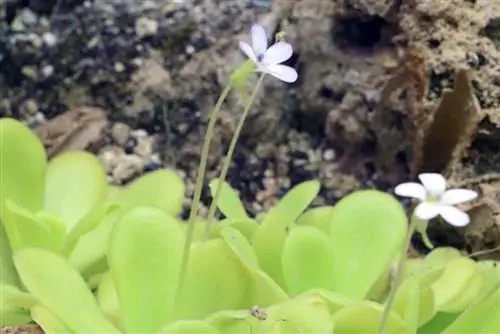
The winter season is a difficult phase for carnivorous plants, as they often receive too little light during this time. If the location cools down at the same time, then this circumstance does not have a negative effect on the carnivores. However, most living spaces are heated and therefore warm for long periods of time, even in winter. In addition, some of the carnivorous plants rest and therefore need cooler winter quarters.
- Illuminate too dark but warm locations with plant lamps
- Depending on the variety, an external winter quarter is required
- A bright location is ideal, with temperatures between 5-10° C
- Bright hallways and unused guest rooms are ideal
- Growth stops when temperatures are too cool
- Leaves turn brown under incorrect location conditions
Propagate
The reproduction of carnivores can be carried out in various ways, none of which are particularly easy. That's why it's better that only breeders with relevant experience tackle this. A great deal of sensitivity and daily care and inspection of the plants are required. Carnivorous plants can be propagated using seeds, cuttings and division of rhizomes.
Seeds
- Seeds don't last long
- For some varieties, seeds require prior treatment
- Pretreat with either cold or heat
- Almost all varieties are light germinators
- Lay seeds loosely on the planting substrate
- Keep constantly moist
Leaf cuttings
- Press cuttings onto fresh plant substrate
- Then cover the petiole with some substrate
- Cutting roots immediately in the substrate
- Alternatively, place the cutting in a glass with distilled water and cover it
- Always keep young plants moist at the beginning
- Slowly get used to normal casting units
Root cuttings
- Separate a he althy piece of the root
- Plant separately
- Keep moist initially
- Weak specimens cannot tolerate this method
Rhizome division
- Remove the plant completely from the pot
- Break into several pieces
- Plant individual parts separately
- Always proceed with caution
Diseases & Pests
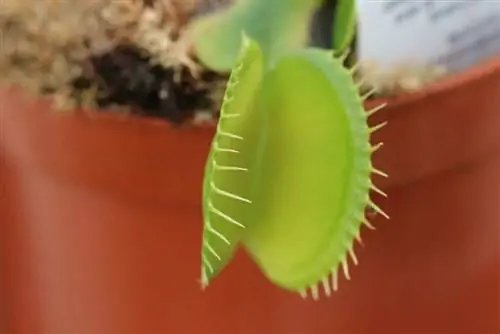
If the site conditions and care are right, diseases rarely occur. It is difficult to protect plants from pest infestation. The carnivores should therefore be checked regularly for infestation and the first signs of disease. In the initial stage, it is very easy to take appropriate countermeasures.
Gray horse
- Mostly occurs in the winter season
- The ideal breeding ground is conditions that are too moist and cold
- Remove affected plant parts immediately
- Administer significantly fewer pouring units
- Place affected plants in isolation
- Choose a bright and airy location
- For prevention, regularly remove dead plant parts
Mold in the plant substrate
- Just a visual problem
- Fix by repotting promptly
- Insert airy substrate
- Ventilate the location regularly
- Water less in winter
Aphids
- Plants react sensitively to infestation
- Rinse insects carefully with soapy water
- Use aphid spray to combat extremely tender plants
- Use suppositories with long-term effects as a preventive measure
Scale insects
- Very harmful, can cause the plant to die
- Hard-leaved varieties are particularly susceptible
- Insert solution with contralineum
- The remedy is leaf shine spray
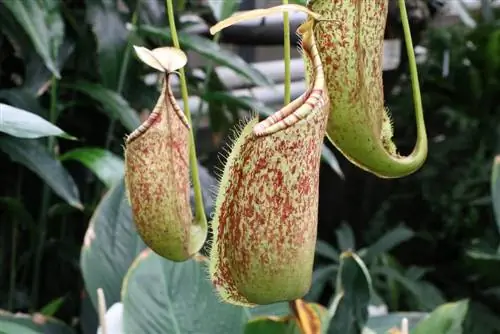
Spider mites
- It is ideal to detect them in good time
- Fight with aphid or mite spray
Caterpillars
- Possible when staying outdoors
- Collect voracious pests from the plant
Snails
- Possible when cultivating in bog beds
- Collect and remove
- Use slug pellets as a preventive measure

